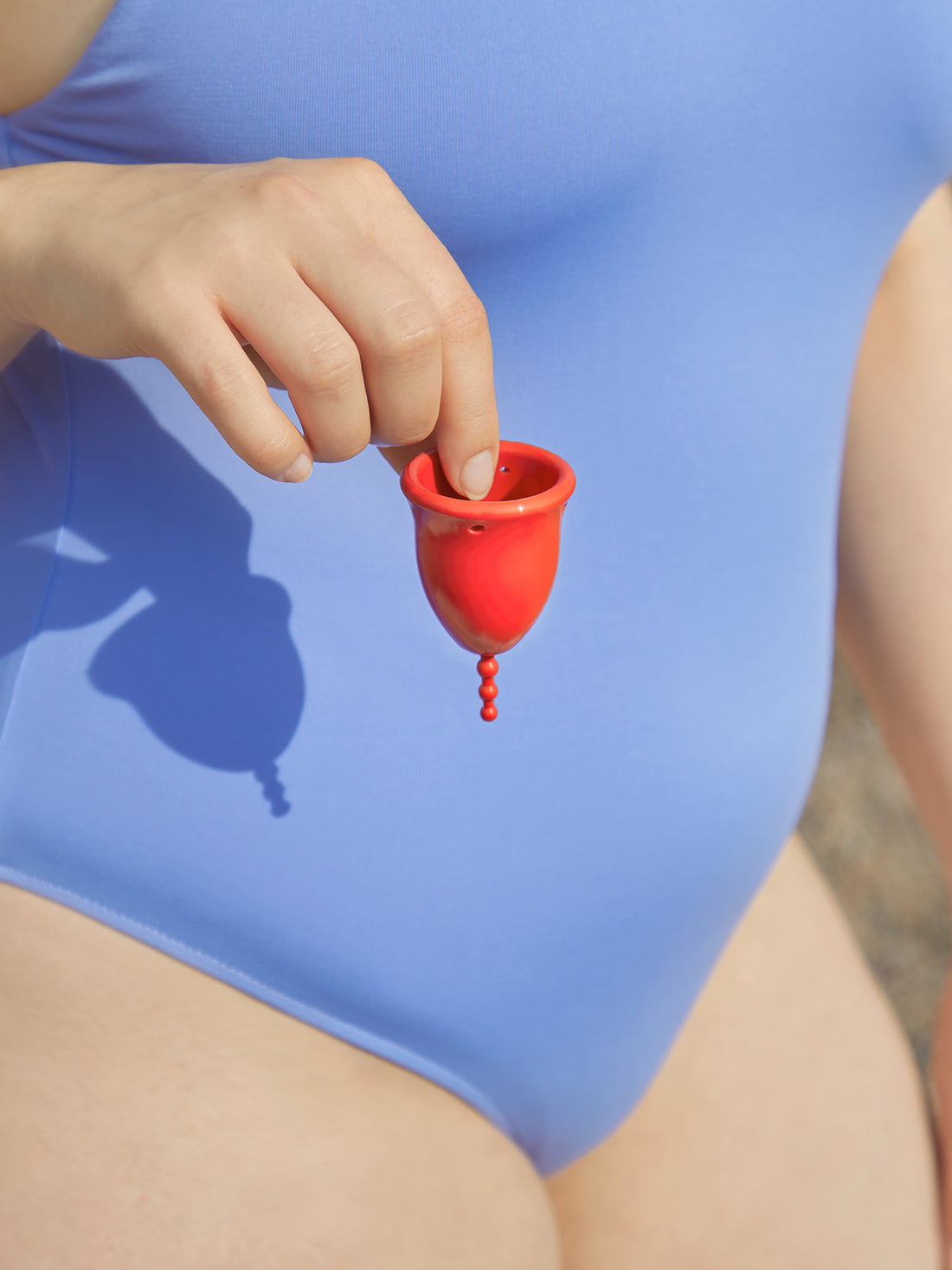
Toxic shock syndrome (TSS) is an extremely rare but serious generalised inflammatory condition of the body. The risk of developing toxic shock syndrome is extremely low in menstrual cup users, but despite this, it is good to be aware of its existence. In this brief information section, we tell you the most important things you should know about toxic shock syndrome.
Prevalence
Toxic shock syndrome is a very rare generalised inflammatory condition of the body. It occurs in about one person in 100,000.
The condition has been linked to the use of absorbent tampons, as its prevalence began to increase when such tampons entered the market in the 1980s. In reality, however, cases of illness unrelated to menstruation are much more common and toxic shock syndrome is observed in adults as well as in children. 95% of those affected lack an antibody in their body that stops the progression of the disease. However, the absence of this antibody is rare as, for example, more than 85% of patients aged 13 to 40, who have a uterus, have high levels of the antibody in their body. Among individuals with a uterus, the peak incidence of toxic shock syndrome is between the ages of 13 and 24, according to studies.
Cause
Toxic shock syndrome is caused by the staphylococcal bacterium. Sometimes a similar clinical picture of the disease can also be caused by the streptococcal bacterium. These bacteria are found naturally on human skin, mucous membranes and the vagina. Inflammatory conditions arise when toxins secreted by these bacteria are allowed to spread into the body, for example, through an ulcer located on the mucous membrane. As a result of spreading, the toxin can damage the entire body, including the liver and kidneys, as well as destroy muscle tissue. For this reason, stopping inflammation quickly after diagnosis is extremely important. If left untreated, inflammation can be fatal.
Symptoms
Symptoms of toxic shock syndrome are very similar to those of influenza. These can include, for example, a sudden rise in fever of more than 39 degrees, diarrhoea, nausea, severe muscle pain and headache, and a decrease in blood pressure and overall level of consciousness. There also include various respiratory symptoms in the nasal passages, skin symptoms such as sunburn-like rash or redness of the mucous membranes and skin, as well as bloodshot eyes.
What should be done?
If you experience any of the above symptoms while using a menstrual cup, remove the menstrual cup immediately. Immediately consult a doctor and tell them about your symptoms, as well as the fact that you are using a menstrual cup. Seek emergency medical assistance immediately and also take your menstrual cup with you, as your doctor may want a bacteria sample from its surface as well.
How is it treated?
Toxic shock syndrome is usually treated in intensive care with intravenous antibiotics. It is important to start treatment without delay to prevent inflammation from progressing to life-threatening multi-organ damage. The mortality rate for this rare but serious inflammation is between 5% and 15%.
How to avoid?
Although toxic shock syndrome is a very rare disease, there is still a risk of it — both for users of tampons or menstrual cups, and for those who do not menstruate. When using a menstrual cup, you can reduce your risk of developing the condition even more by cleaning your menstrual cup thoroughly. Always boil the cup before and after menstruation and wash it thoroughly with each emptying. If you want to always have a disinfected menstrual cup available, the most convenient thing is to get two cups, one of which is always clean and ready to be used. Also, remember good hand hygiene every time you handle the menstrual cup.
The Nomai Menstrual Cup is made of medical grade silicone. Medical grade silicone is not a favourable breeding ground for bacteria, and therefore bacteria cannot use the surface of the Nomai Menstrual Cup as their breeding ground. The safety of the menstrual cup is also increased by the fact that the cup collects menstrual blood inside it and thus the blood does not come into contact with the vaginal mucosa in the same way as when using a tampon. Despite this, it is good to empty or change the cup at least every 12 hours to ensure the highest possible level of hygiene.
If you have abnormal symptoms on the vaginal mucosa, such as ulcers, irritability or severe itching, or if you experience heavy or odoured white discharge, do not use the menstrual cup. If the symptoms persist, consult your gynaecologist. When the mucosal symptoms have been resolved, you can continue using the menstrual cup without worry.

